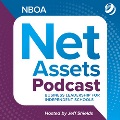Aug 10, 2020, 4:18 PM
(From The Washington Post) More than 97,000 U.S. children tested positive for the coronavirus in the last two weeks of July, marking a 40% increase in child cases, according to data from the American Academy of Pediatrics and the Children’s Hospital Association. About 7 in 10 cases over that period were reported in states in the South. The jump in cases comes as children are entering close quarters for the first time in months as some schools reopen their doors to students.
(From The 74 Million) This past spring, many teachers turned to the popular video-sharing app TikTok to entertain their students, share educational content and seek suggestions on ways to improve students’ focus in the wake of the pandemic. But the future of the popular app — which now has more than 100 million users — is now unclear after the Trump administration issued an executive order aimed at banning TikTok unless the China-based parent company sells it. Should Microsoft or another entity buy TikTok, educators may see more phones used in the classroom as a way for students to create media, according to ed tech experts.
More from The 74 Million
(From Kellogg Insight) As schools consider whether they can reopen safely, some are looking to implement rotation plans, in which groups of students or employees take turns inhabiting the physical space. New research from the Kellogg School of Management at Northwestern University suggests that rotational schedules can be effective in allowing for easier social distancing and minimizing transmission of the virus, depending on an organization’s reaction time.
Using mathematical models to simulate several possible rotation schedules, researchers found that for organizations with a quick reaction time, the optimal strategy is frequent rotation, while lower COVID-19 detection time calls for less frequent rotation. Importnatly, a rotation plan doesn’t need to be perfect in order to be beneficial. While intermixing between groups is not ideal, a small amount of mixing should not dramatically exacerbate the spread of the disease.

Listen to the latest episode of the Net Assets podcast.